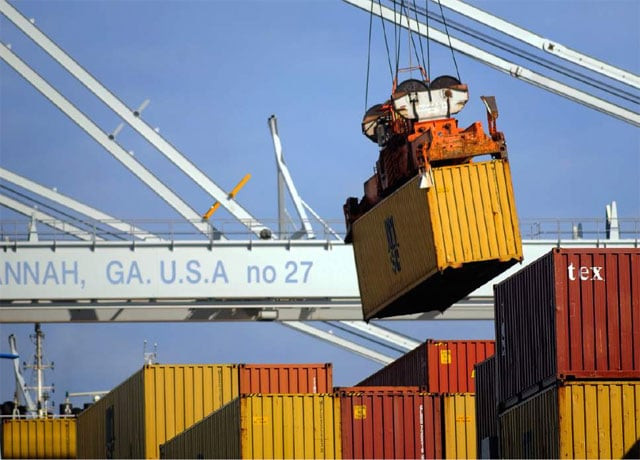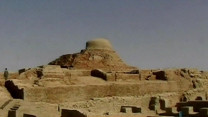Pakistan gets less duty-free access to US than EU, China
Time ripe to seek greater market access, revive ROZ initiative

Time ripe to seek greater market access, revive ROZ initiative. PHOTO: FILE
The United States is Pakistan’s biggest export destination and one of the few countries where Pakistan enjoys a substantial trade surplus.
During the last three years, the annual trade balance has been around $2 billion in favour of Pakistan.
In 2014, Pakistan exported goods worth $3.6 billion and imported $1.5 billion of goods from the US. Pakistan’s exports predominantly comprise textile made-ups with shipments of home textile standing at more than $1 billion and accounting for about 10% market share in the total US global imports of $13 billion.
Despite the trade surplus, Pakistan’s total share in the US market of $2.3 trillion is just 0.2%. The US is also Pakistan’s biggest donor and contributed over $4 billion since 2009 to projects relating to energy, economic growth, education, healthcare and women empowerment. Moreover, Pakistan also receives $500 million annually for the Coalition Support Fund (CSF) in support of counter-terrorism efforts along the Afghan border.
Pakistan is also a beneficiary of the US Generalised System of Preferences (GSP) programme that provides duty-free access for approximately 3,500 products from 120 designated countries including Pakistan. It has been exporting an average of $200 million worth of goods under the GSP scheme which include gems and jewellery, carpets, sugar, cutlery and surgical items. The GSP does not include Pakistan’s core textile exports for duty-free market access.
Unjust tariff
There is an impression amongst policy circles that the US tariff system is unfair for countries such as Pakistan that depend on exports of textiles to the US. Edward Gresser, a renowned trade policy scholar while testifying in the US senate, argued that “Pakistan’s exporters have to pay $315 million in tariffs on exports of $3.2 billion worth of bed sheets, towels and clothes compared to British exports of $47 billion comprising airplanes, medicines and oil on which only $280 million is levied as customs duty.”
Read: US likely to implement zero duty on Pakistani mangoes
He also made a general comparison of exports made by the EU, China and Pakistan and noted that 66% of EU’s and 57% of Chinese exports enter duty-free in the US, but only 12% of Pakistan’s exports get this treatment.
Push for market access
The market access has been in the agenda of bilateral engagements at the highest level where Pakistan has been persistently requesting the US leadership for such opportunities. The Reconstruction Opportunity Zones (ROZ) was a step in this direction that visualised duty-free import of goods manufactured in the conflict region along the Pakistan-Afghanistan border.

Pakistan’s quest for market access intensified in 2010 when it was hit by floods due to unprecedented monsoon rains. All the four provinces were affected as a quarter of the country’s territory came under water displacing 20 million people and resulting in loss of life, property and infrastructure.
The government saw this as an opportunity to request market access in the US and EU on humanitarian grounds to rebuild the country’s economy. The US assured Pakistan that it would include the flood-stricken areas in the ROZ legislation so that products manufactured there were provided duty-free access.
The US also supported Pakistan in a similar quest for market access to the EU that resulted in specific trade concessions. The EU also agreed to modify its GSP Plus scheme to enable Pakistan to apply for these concessions.
The EU trade concessions required consensus among 154 members of the WTO for the Pakistan-specific package. There have been precedents where the international community has supported least developing countries through trade concessions but this gesture of the EU was unprecedented. Sceptics were not very optimistic that the WTO members would be able to reach consensus. The members including India and Bangladesh, who initially opposed the EU’s proposal, however, agreed on the waiver for Pakistan-specific concessions.
ROZ legislation gets stuck
In the meantime, the US government got the ROZ legislation approved from the House of Representatives and submitted it to the senate for approval after which ROZ could have been established. Since then, the legislation is pending and there has been not much movement on the US side for market access to Pakistan.
Read: South Africa places duty on Pakistan’s cement exports
One of the plausible reasons could be the lack of mandate for the US administration to negotiate such concessions. Recently, the US Congress has given this authority to President Obama that would enable the government to complete work on pending trade agreements.
This is a time-specific window and provides an opportunity for Pakistan to reiterate market access and revival of the ROZ initiative. The trade-led development model would create more sustainable livelihood opportunities for the conflict-prone region than donor-driven projects.
The writer is a development professional with over 20 years of experience with public and development sectors
Published in The Express Tribune, September 21st, 2015.
Like Business on Facebook, follow @TribuneBiz on Twitter to stay informed and join in the conversation.



















COMMENTS
Comments are moderated and generally will be posted if they are on-topic and not abusive.
For more information, please see our Comments FAQ